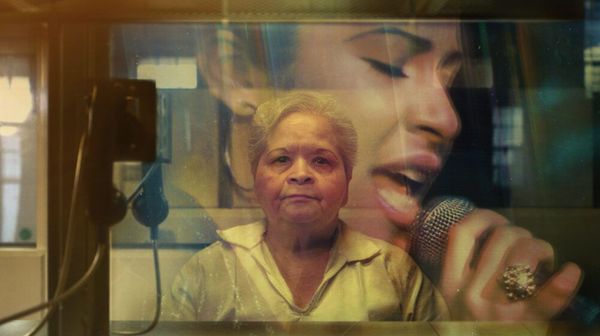“Soft power”, as American political scientist Joseph Nye Jr. said in the late 1980s, is a “power of attraction through culture, political ideas, and policies rather than coercion” that military hard power exhibits. This is now being reflected in increased interest, especially by smaller nations in the world, in investing more and doing well in elite sports as it is thought that success in international sporting events boosts a nation’s chances of attaining soft power.
So, it can be said that the golden period of Indian sports may have begun — the Tokyo Olympics and then the Birmingham 2022 Commonwealth Games (CWG) are examples of a good performance. Neeraj Chopra who won an Olympic gold medal in men’s javelin throw is now a household name. At the CWG 2022, Indian athletes won 61 medals, including 22 golds. These medals not only provide pride to every Indian citizen but also demonstrate the country’s soft power on the global stage and encourage working towards the status of a great “geopolitical actor”.
A survey
Until recently there has been no empirical evidence whether performance in the Olympics or other world championships improved soft power or not.
When Dongfeng Liu (International Professor of Sport Management for the Shanghai campus of the Sport Business School) surveyed French citizens in 2020 (he was also International Professor, Sport Business School, France) on China’s performance in the Olympics and their impressions about China based on its rising medal count, he found that a country’s Olympic achievement has a positive effect on its national soft power.
He issued a caveat: as China is a communist country, there tends to be a prejudiced view of its human rights record and the standing of its minorities, which does not result in a positive perception of China, or for that matter, even Russia or North Korea. It is very difficult for these countries to build “branding” for themselves. As India is a democratic country it may not have to worry about such factors. Even so, it might yet learn lessons from China’s case.
China uses its superiority in elite sports to build “people-to-people” relations with other countries. For example, athletes from African countries such as Madagascar are trained in swimming, badminton, table tennis, etc. in China, which helps Beijing create a positive impact on a wider population and result in better formal relations as well. There is also China’s memorandum of understanding with countries such as Kenya so that Chinese runners can train with Kenyan athletes, as they are among the best in the world when it comes to long-distance running.
India’s tortoise-like walk
India’s medal tally in the Tokyo Olympics Games — seven — was its most decorated Olympic Games in Indian history. But there is no hiding the fact that India has one of the world’s poorest population-to-medal ratios when it comes to the Olympics. An article, “Indian Olympic medal winners: A comprehensive list” shows that India has won 35 medals at the Olympics since the 1900 edition. With a population of 1.3 billion-plus people, there are various reasons for India’s disappointing performance. Professional engagement in sports is hampered by the relatively low and scant exposure of Indians to sports at the elementary school level.
In September 2014, the Ministry of Sports launched the Target Olympic Podium Scheme (TOPS) to improve India’s performance at the Olympics and Paralympics — there is extra monetary assistance and training from the best national and international coaches. India’s gradual success in sporting events is being attributed to these “policies.”
In 2016, a NITI Aayog report came up with a 20-point plan to improve India’s Olympics performance. The report said India still lacks a favourable atmosphere for sports to polish the skills of early-stage athletes. It recommended efforts to be made at the family, community to school, regional academies, State and national levels to improve things. Ensuring competent coaches, and having adequate funding and more sports academics still remain major issues even decades later. A reply in Parliament (2018) said that India spends only three paise per day per capita on sports. In contrast, China spends ₹6.1 per day per capita.
Mega sporting events generate viewership in their billions. So they provide a platform for countries to showcase their culture, values and tradition.
The International Olympic Committee (IOC) claimed that the Tokyo Olympic Games was watched by over 3.05 billion people, ‘a 74 per cent increase in digital viewers from Rio 2016’. This proves that there is a great opportunity for India to use such events as a platform to enhance its soft power that relies on its cultural heritage.
The Government must also move quickly to separate politics from sports. Former players, rather than politicians, should be chosen to lead sports organisations.
Marching forward
Here are some recommendations for the Indian government to increase the country’s sporting performance and soft power.
First, India should concentrate on forging MoUs with nations that excel in specific sports. The aim should be to train Indian players overseas. For example, Australia and the United Kingdom can assist us in swimming given their standing here. When it comes to running, negotiating collaborative training agreements with African countries such as Kenya would be ideal. There should be no politics in seeking or even offering assistance. Take this example too: China has requested Indian assistance in improving cricket development in China (Chongqing city).
Second, TOPS — China too also had a similar scheme — has demonstrated that focusing on a few sports is beneficial for a country such as India, which is striving to enhance its sporting abilities and standing. India needs to boost the number of athletes under TOPS — at least 500 athletes should train under the scheme to foster a competitive climate, in turn aiding performance.
Third, private investment needs to be harnessed to develop infrastructure. The better a country performs in sporting events the greater a sports person’s interest in their sports atmosphere. This also creates a huge market for private players to invest in. For example, leading corporate houses in India have already shown how their active participation and investment can improve sporting performance as a result of unique corporate sports programmes. The Government should also work on a public-private partnership (PPP) model to create basic sporting infrastructure, as recommended by NITI Aayog, at the district level so that talent can be captured at an early stage. Soft power is not an end but a means to an end.
Abhishek Srivastav is Assistant Professor of Diplomacy and Disarmament, Centre for International Politics, Organization, and Disarmament, School of International Studies, Jawaharlal Nehru University, New Delhi. Kartike Garg is a postgraduate student of International Relations and Area Studies, School of International Studies (SIS), Jawaharlal Nehru University. He is also a research intern at the Centre for Air Power Studies (CAPS) India.







